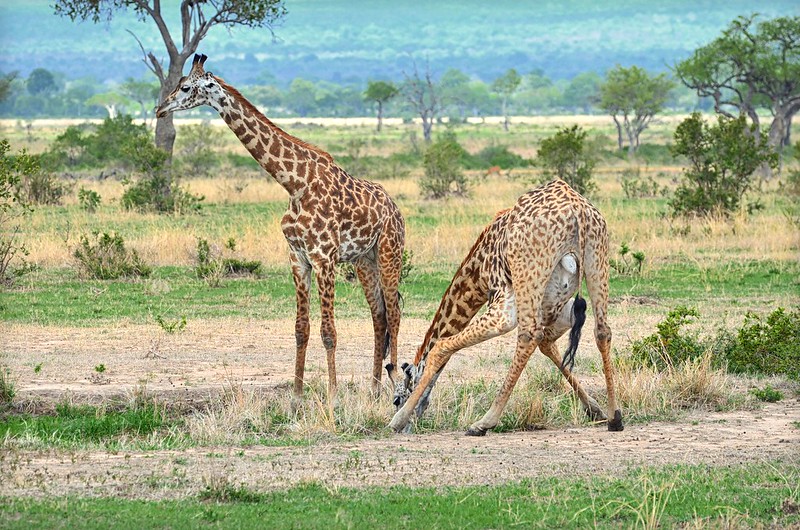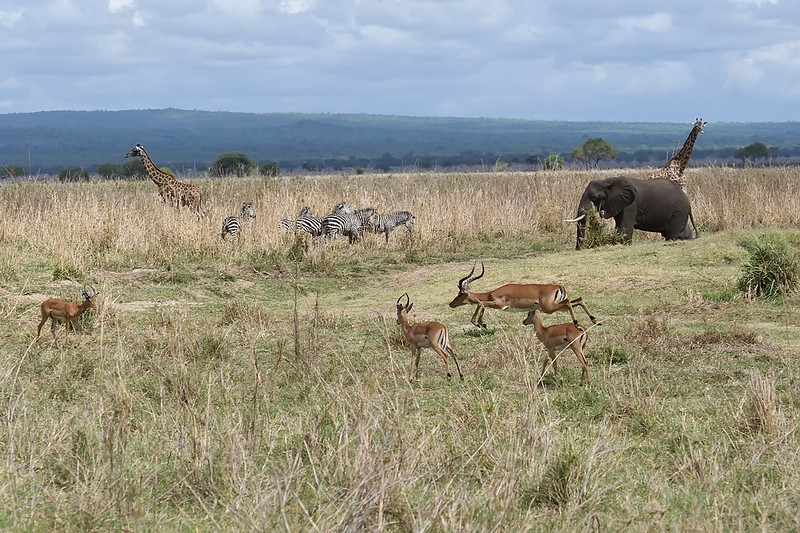Mikumi National Park
Mikumi National Park is the fourth largest national park in Tanzania, situated 300 km west of Dar es Salaam. The Park shares a contiguous boundary and habitat with the Selous Game Reserve to the south, facilitating wildlife migration between the northern region of the reserve and the reserve itself. Mikumi is situated between the Uluguru Mountains and the Lumango Range. The designated area was officially established as a national park in 1964, including 3,230 square kilometers. Mikumi is frequently juxtaposed with Serengeti and Tarangire National Parks because of its varied habitat. The park is named Mikumi, after the settlement located on its western boundary with Dar es Salaam. The settlement derives its name from the palm palms (Borassus ssp). The majority of visitors to Mikumi National Park seek to observe the ‘Big Five’ (Leopard, Lion, Elephant, Buffalo, and Rhino).
Mikumi National Park Wildlife
Mikumi National Park features several vegetation types such to those found in Serengeti and Tarangire National Parks. The park is partitioned into two halves, resulting in distinct habitats characterized by varied vegetation zones. The northern region is characterized by alluvial plains that are drained by the Mkata River. This area is characterized by wide savannah grassland interspersed with Baobab trees, palms, acacias, and tamarind trees. The palm trees are located along the Mkata river basin. The northern sector hosts a substantial population of herbivores, which congregate near the dwindling water sources in the plains during the dry season, so attracting predators such as hyenas, lions, and leopards intermittently. The southern region of Mikumi is characterized by forests interspersed with miombo woods, riverine forests, lowland forests, bushland, thickets, and acacia trees. This area accommodates tree-climbing lions; nevertheless, it is not readily accessible due to an inadequate road network.

Wildlife in Mikumi National Park
Mikumi National Park, characterized by its many flora types, hosts a plethora of animals, including several of Africa’s most emblematic wildlife species. Included among these species are Lions, Leopards, Cheetahs, Elephants, Zebras, Sable Antelope, African Hunting Dogs, Blue Wildebeests, Lichtenstein’s Hartebeests, Giraffes, Buffaloes, Impalas, Elands, Greater Kudus, and Warthogs. Primates such as Yellow Baboons, Vervet Monkeys, and Colobus Monkeys inhabit Mikumi. The park is home to amphibians and reptiles, including Nile Crocodiles, Monitor Lizards, Pythons, Cobras, Tortoises, and Turtles. The park is home to around 400 bird species, including Lilac-breasted Rollers, Secretary Birds, African Fish Eagles, Open-Billed Storks, Yellow-Billed Storks, Hornbills, Ground Hornbills, Kingfishers, Bee-Eaters, Vultures, and Raptors.
Things to Do Mikumi National Park
Guided Nature Walks in Mikumi National Park
The activity occurs on the specified walking trails and lasts 3-4 hours throughout the park. Three walking paths are utilized: Kikoboga, Vuma Hills, and the Mikumi Wildlife Resort trail. Visitors traverse the brief savannah and Miombo woodland vegetation accompanied by knowledgeable guides and armed rangers for protection against wildlife. The guided nature walks provide travelers with intimate interactions with wildlife and avifauna. This activity in Mikumi National Park occurs exclusively during the dry season and is limited to adults.
Bird watching in Mikumi National Park
Mikumi National Park hosts more than 400 documented bird species, encompassing migratory, savanna, aquatic, and various other types. Birdwatching occurs on game drives and nature walks, with notable sightings including the yellow-throated longclaw, open-billed stork, Zanzibar red bishop, purple-breasted roller, hornbills, malachite kingfisher, bateleur eagle, martial eagle, and marabou stork. Aquatic avifauna can be observed around the Hippo Pool in the park. Migratory birds are observed from November to April.
Wildlife Observation
Wildlife observation is among the most exceptional activities conducted at Mikumi National Park. Mikumi National Park provides morning, daytime, and nighttime wildlife drives, showcasing several nocturnal species. This activity occurs in 4×4 safari vehicles, overseen by seasoned safari guides, providing tourists the opportunity to observe wildlife in their natural habitats. Game drives in Mikumi National Park primarily occur in the Mkata floodplains, which are ideal for observing lions and leopards. The region is home to substantial populations of buffalo, elephants, zebras, wild dogs, waterbucks, wildebeests, hartebeests, giraffes, sable antelopes, impalas, larger kudus, elands, warthogs, and yellow baboons. An essential highlight during the wildlife drive is the Hippo Pool, where one can observe hippos wallowing and snorting at close proximity.

Camping and Picnicking
Mikumi National Park provides opportunities for both camping and picnicking, enabling visitors to engage with the natural surroundings. Camping in Mikumi occurs primarily in the northern region and is predominantly undertaken by nature enthusiasts. The park includes two camping sites: a public campsite and a private campsite. Essential amenities such as water, restrooms, bathing facilities, and a kitchen are provided. Prior reservation is necessary for private campsites to prevent difficulties. Conversely, the Park offers stunning panoramas, diverse terrains, and locations that serve as an optimal wilderness setting for safari picnics, featuring a range of activities including dining and games. Some of the picnic locations include Mwanambogo, Mbuyuni, and Millenium.
Visits of a cultural nature
Mikumi National Park is encircled by distinctive civilizations, all coordinated under Chilunga cultural tourism. Cultural excursions occur in the neighboring villages. Tourists get the opportunity to engage in ethnic dances and sample traditional cuisine. Local market and village trips are also available.
Best time to go to Mikumi National Park
Mikumi National Park is accessible year-round, contingent upon the visitor’s preference. The optimal period to visit the park is during the dry season, specifically from June to October. During this interval, the flora is sparse, and fauna typically congregate around the Mkata River for hydration.
How to access Mikumi National Park
Access to the park is available either by road or air, contingent upon the traveler’s preference. The park can be accessed by many routes via road. The park is accessible from Dar-es-Salaam, with a travel duration of 4 to 5 hours. Conversely, getting from Dodoma to Ruaha National Park requires roughly 6 hours. Visitors may opt for air transit, since domestic flights operated by Safari Air Link connect to destinations such as Selous, Zanzibar, Ruaha, and Dar es Salaam.
Lodging in Mikumi National Park
Makimi National Park offers a variety of accommodations for guests, ranging from luxury to mid-range and budget safari lodges and campgrounds. The facilities in Mikumi National Park are Mikumi Wildlife Camp, Tan-Swiss Lodge, and Stanley’s Kopje Camp.
